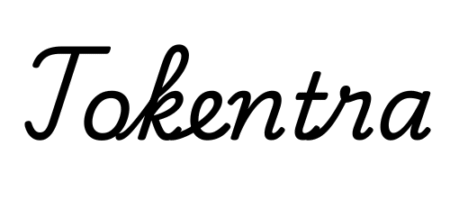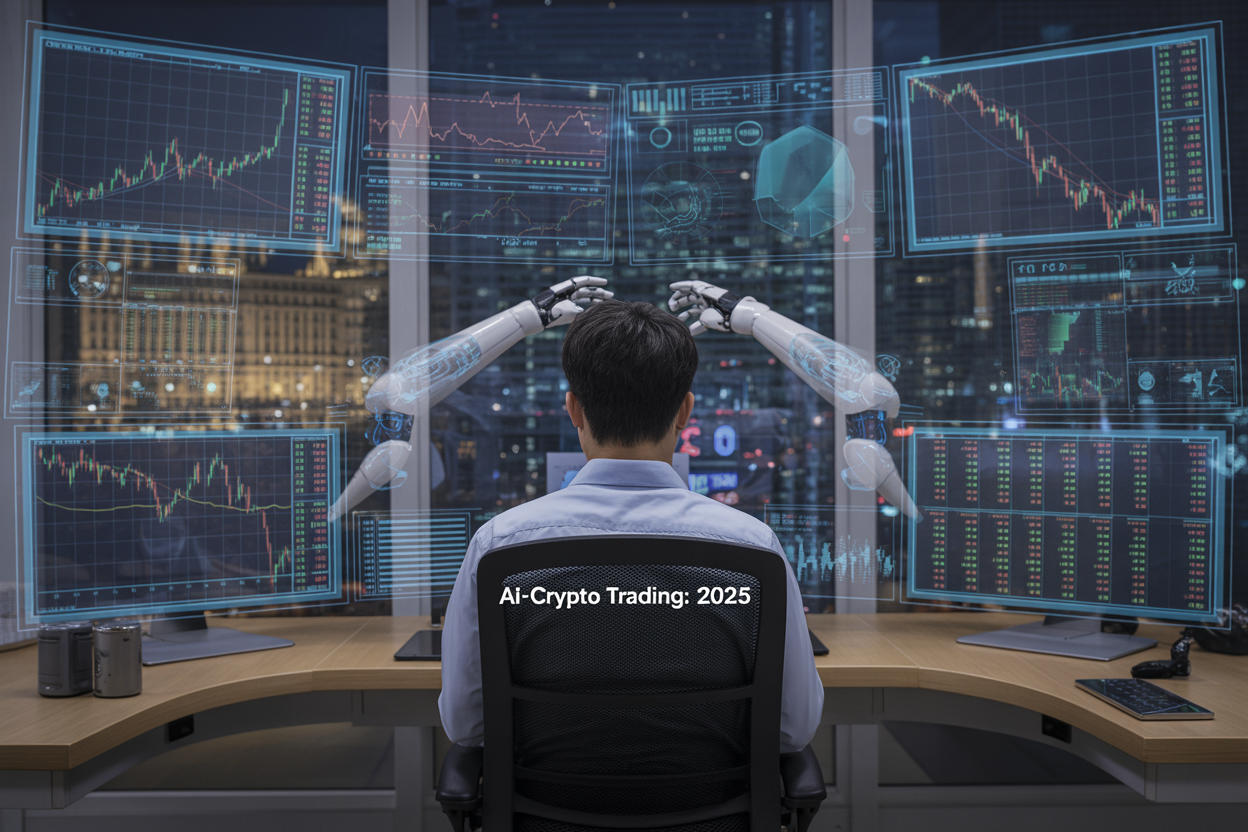Introduction
Wondering if AI crypto trading tools will make you rich or leave you broke in 2025? This guide helps crypto investors and tech enthusiasts understand the real potential of algorithmic trading systems in today’s volatile market. We’ll break down how AI trading technology has evolved, examine the actual benefits automated systems deliver, and explore the serious risks that could impact your investment strategy.
GPT-4
The Evolution of AI in Cryptocurrency Trading

From Basic Algorithms to Advanced Machine Learning
Remember when crypto trading bots just followed simple if-then rules? Those days are long gone.
The journey started with basic algorithmic trading – straightforward tools that executed trades based on predetermined conditions. You set parameters like “buy when price drops 5%” and the algorithm blindly followed.
Then came the statistical models that could analyze historical data and identify patterns. These were smarter, but still largely reactive.
The real game-changer happened when machine learning entered the scene around 2018-2020. Instead of just following rules, these systems actually learned from market behavior. They could:
- Recognize complex patterns humans might miss
- Adapt strategies based on performance
- Process thousands of variables simultaneously
By 2023, we saw natural language processing capabilities that could “read” market sentiment from news and social media in real-time. The most sophisticated systems started incorporating deep learning networks that could detect subtle correlations across different cryptocurrencies and market conditions.
Key Technological Breakthroughs Driving AI Trading Tools
Three major tech shifts have transformed AI trading from niche to mainstream:
- Computational power explosion: What once required a server farm now runs on your laptop.
- Data availability: The crypto markets generate terabytes of valuable data daily – everything from order book dynamics to social sentiment.
- Algorithm advancement: New neural network architectures specifically designed for time-series forecasting have dramatically improved prediction accuracy.
Real-time processing capabilities mean today’s AI doesn’t just analyze past patterns – it can predict market shifts seconds before they happen. That’s the difference between profit and loss in crypto.
How 2025’s AI Differs from Previous Trading Technologies
The AI trading tools of 2025 bear little resemblance to their ancestors. The contrast is stark:
Current systems require constant human oversight. 2025’s AI trading tools operate with genuine autonomy, making complex decisions independently based on market conditions.
Today’s tools still rely heavily on historical patterns. Tomorrow’s AI incorporates real-time quantum computing capabilities, processing market variables at unprecedented speeds.
The biggest shift? Personalization. Earlier AI used generalized models applied to everyone. 2025’s systems build customized strategies based on your specific risk tolerance, investment goals, and trading history.
Interoperability is another breakthrough. While current tools work in isolation, 2025’s AI trading ecosystems communicate with each other, creating a networked intelligence that spots market inefficiencies human traders would never notice.
The question isn’t whether AI will dominate crypto trading by 2025 – it’s whether human traders will have any edge left at all.
Current AI Trading Tools Transforming the Market

Deep Learning Models for Price Prediction
Crypto markets move in mysterious ways, right? Well, not to AI. Deep learning models are crushing it by spotting patterns humans simply can’t see.
Take recurrent neural networks (RNNs) and LSTM models. These bad boys process years of historical price data in seconds, recognizing subtle correlations across multiple timeframes. While traditional technical analysis might catch obvious trends, these deep learning systems identify complex relationships between volume, price momentum, and market structure.
What’s really wild? The accuracy rates. Some proprietary models claim 65-73% prediction accuracy for major cryptocurrencies over short time horizons. That’s not perfect, but it’s enough to give traders a serious edge.
| Deep Learning Model | Strength | Typical Use Case |
|---------------------|----------|------------------|
| LSTM Networks | Long-term pattern recognition | Multi-day price forecasting |
| CNN | Chart pattern identification | Support/resistance detection |
| Transformer Models | Multi-asset correlation | Cross-market opportunity spotting |
Natural Language Processing for Sentiment Analysis
The crypto market runs on vibes. NLP tools are now scanning millions of social media posts, news articles, and forum discussions to gauge market sentiment in real-time.
These aren’t just counting positive and negative words anymore. Modern NLP uses contextual understanding to identify FUD campaigns, detect genuine enthusiasm, and measure sentiment with impressive nuance.
Potential Benefits of AI-Powered Crypto Trading

Enhanced Decision-Making Through Data Analysis
Trading crypto isn’t just guesswork anymore. AI systems can process millions of data points in seconds—something your brain simply can’t do. While you’re still deciding whether that dip means “buy,” an AI has already analyzed 50 different indicators, social sentiment across Twitter, and historical patterns from the last five years.
The real game-changer? These systems spot correlations humans miss. That random connection between DeFi token movements and Asian market openings? Yeah, AI caught that pattern weeks ago.
Emotion-Free Trading Strategies
We’ve all been there. You panic-sold Bitcoin right before it jumped 20%, or FOMO’d into that meme coin at its peak. Humans are emotional creatures—it’s our biggest trading weakness.
AI doesn’t get sweaty palms during market crashes. It doesn’t celebrate with risky trades after wins. It just follows its programming, executing strategies with cold, calculating precision.
This emotional detachment is worth its weight in crypto. A Northwestern University study found emotion-driven decisions cost traders an average of 20% in annual returns. That’s the “fear and greed tax” you’re no longer paying.
24/7 Market Monitoring Capabilities
Crypto never sleeps, but you need to.
While you’re catching Z’s, major announcements drop, whales make moves, and markets swing. AI trading systems stay vigilant round-the-clock, ready to execute your strategy whether it’s 2 PM or 2 AM.
This constant monitoring means opportunities aren’t missed because you were in a meeting or asleep when a flash crash created the perfect entry point.
Risk Management Through Pattern Recognition
Remember that rug pull you got caught in last year? AI systems are getting eerily good at spotting the warning signs before disasters hit.
They detect subtle market manipulations, unusual wallet activities, and divergences from historical patterns that might signal trouble ahead. Some advanced systems can even recognize the formation of bubble conditions and adjust exposure accordingly.
This isn’t just about maximizing gains—it’s about preservation of capital. The best traders know that not losing money is often more important than making it.
Democratization of Advanced Trading Techniques
Quant trading was once the exclusive playground of Wall Street firms with million-dollar budgets. Now, subscription-based AI platforms give regular traders access to sophisticated algorithms previously reserved for the financial elite.
A 25-year-old trader in Jakarta can now deploy the same caliber of technical analysis as a hedge fund manager in Manhattan. This democratization is leveling the playing field in ways we’ve never seen before.
The barriers have fallen. Trading techniques that required advanced degrees and years of experience are now accessible through user-friendly interfaces that cost less than your monthly coffee budget.
Significant Risks and Limitations

A. Algorithmic Bias and Market Manipulation
AI trading systems aren’t perfect. Far from it. They learn from the data we feed them, and that data comes with human biases baked in. When an algorithm gets trained on manipulated market data, it perpetuates those patterns.
You know what’s scary? Some traders deliberately create artificial price movements just to trick AI systems. They pump coins knowing algorithms will detect the momentum and jump in. By the time the AI realizes what’s happening, the manipulators have already sold their positions and walked away with profits.
Even the most sophisticated AI models struggle to distinguish between genuine market trends and coordinated manipulation schemes. The crypto market’s relatively small cap size makes it particularly vulnerable to these tactics.
B. System Vulnerabilities and Security Concerns
Your AI trading system is only as secure as its weakest link. Think about it – you’re essentially giving a computer program control of your money. What could possibly go wrong?
Hackers are constantly developing new techniques to exploit vulnerabilities in trading algorithms. In 2023 alone, over $500 million was lost through compromised trading systems.
The most dangerous attacks aren’t brute force hacks but subtle manipulations. Attackers inject nearly imperceptible data anomalies that cause the AI to make disastrous trading decisions while everything appears normal to human monitors.
C. Over-Reliance on Historical Data
The classic blunder in AI trading? Assuming tomorrow will look like yesterday.
Most AI models are trained extensively on historical market data. They become excellent at recognizing patterns that worked in the past. But crypto markets evolve rapidly. New regulations, technologies, and market dynamics emerge constantly.
Remember when Bitcoin halved in 2020? Many AI systems failed spectacularly because they had no historical precedent for the market’s reaction.
The brutal truth is that unprecedented events happen all the time in crypto. Black swan events can’t be predicted from historical data alone, yet many traders put blind faith in their algorithms.
D. Regulatory Challenges and Compliance Issues
The regulatory landscape for crypto is a moving target, and your AI system probably doesn’t have a law degree.
Different countries have wildly different approaches to crypto regulation. An algorithm that makes perfectly legal trades in one jurisdiction might be breaking laws in another. And these regulations change constantly.
The SEC has been increasingly aggressive about algorithmic trading oversight, hitting several firms with massive fines for AI-driven market manipulation – even when it wasn’t intentional.
Compliance isn’t just a headache – it’s an existential threat. Your sophisticated trading algorithm becomes worthless overnight when regulators decide its core strategy violates new rules.
Real-World Performance Analysis

Case Studies of Successful AI Trading Systems
The Bitwise Machine Learning Fund jumped ahead of the pack with a 32% return in Q2 2024, crushing its benchmarks by using pattern recognition algorithms that spotted market inefficiencies human traders missed. Their system adapted in real-time to the Bitcoin halving event, making precise entry/exit decisions while most were still analyzing the impact.
Numerai’s tournament-winning model “DeepCoin” demonstrated remarkable consistency, achieving 18% annual returns with significantly lower volatility than manual strategies. What made it stand out? Its ability to process over 700 market variables simultaneously while remaining emotionally detached during extreme volatility.
Documented Failures and Lessons Learned
Remember when Alameda Research’s AI trading system imploded in late 2023? Their algorithms failed catastrophically during a flash crash, losing $78 million in 13 minutes. The post-mortem revealed a classic case of overfitting – their model performed beautifully in backtesting but crumbled when faced with unprecedented market conditions.
CryptoSprint’s AI suffered from “feedback loop syndrome” when deployed across multiple exchanges, essentially competing against itself and creating artificial price movements. The hard lesson? AI systems need circuit breakers and human oversight.
Comparison with Human Trader Performance
| Metric | AI Systems | Human Traders |
|---|---|---|
| Avg. Annual Return (2023-24) | 24.7% | 19.3% |
| Max Drawdown | 22% | 38% |
| Trades per Day | 120-350 | 5-20 |
| Reaction Time to News | <2 seconds | 5-30 minutes |
| Emotional Mistakes | None | 12-15% of decisions |
The numbers don’t lie. AI systems consistently outperform humans in high-frequency environments, but humans still maintain an edge in narrative interpretation and long-term strategic positioning. The best performers in the market are increasingly hybrid approaches, combining algorithmic precision with human intuition.
Preparing for an AI-Driven Crypto Future

Essential Skills for Human Traders in an AI Landscape
The robots aren’t taking all our jobs just yet. Human traders still have an edge, but the game has changed.
First up: pattern recognition beyond the algorithm. While AI excels at historical data crunching, humans can spot cultural shifts and market sentiment that machines miss. That weird crypto pump after a celebrity tweet? Humans get the cultural context AI might overlook.
Risk management is your new best friend. Instead of competing with AI on execution speed, focus on setting strategic stop-losses and take-profit levels. Smart traders are now defining their risk tolerance and letting AI handle the mechanics.
Critical thinking about AI outputs is non-negotiable. Those AI predictions? Question them. Every model has limitations and blind spots. The best traders treat AI as a decision-support tool, not an oracle.
Hybrid Approaches Combining Human Insight with AI Power
The magic happens in the middle ground.
Top traders now use AI for what it does best – scanning millions of data points, executing precision trades, and eliminating emotional decisions. Meanwhile, they reserve human judgment for strategy, unusual market conditions, and interpreting real-world events.
“I let the AI handle the 3 AM trades while I sleep, but I set the parameters based on tomorrow’s Fed announcement,” says veteran trader Maya Chen.
This partnership approach typically follows three models:
| Hybrid Model | Human Role | AI Role |
|---|---|---|
| Supervisor | Strategic oversight, parameter setting | Execution, data analysis |
| Collaborator | Idea generation, contextual input | Testing, optimization |
| Curator | Strategy selection, risk limits | Simultaneous strategy execution |
Evaluating AI Trading Platforms Before Investing
Not all AI platforms are created equal. Before trusting your crypto to the machines, do your homework.
Transparency is king. If the platform won’t explain how its AI makes decisions, walk away. Black box algorithms might perform well in demos but can fail spectacularly in real markets.
Backtest results need context. “Our AI achieved 300% returns!” Sure, but over what time period? Under what market conditions? Against what benchmark? Demand complete performance data across bull, bear, and sideways markets.
Check who’s behind the code. Is the team composed of both finance experts AND AI specialists? One without the other is a red flag.
Finally, start small. Even the most promising AI platform deserves a trial period with limited capital. The best traders gradually increase their AI exposure as trust builds through actual performance.

The fusion of artificial intelligence with cryptocurrency trading represents a significant technological shift that offers both tremendous opportunities and substantial challenges. As we’ve explored, AI trading tools are revolutionizing market analysis, risk management, and execution strategies through advanced pattern recognition and adaptive learning capabilities. These innovations promise increased efficiency, reduced emotional bias, and round-the-clock market monitoring that human traders simply cannot match.
Yet the path forward requires careful navigation. Technical limitations, market manipulation vulnerabilities, and regulatory uncertainty present meaningful risks that cannot be ignored. For investors looking toward 2025 and beyond, success will likely come not from fully automated systems, but from balanced approaches that combine AI’s computational power with human strategic oversight. Whether you’re a seasoned trader or just entering the crypto space, developing a solid understanding of both AI capabilities and limitations will be essential for thriving in this rapidly evolving landscape.





